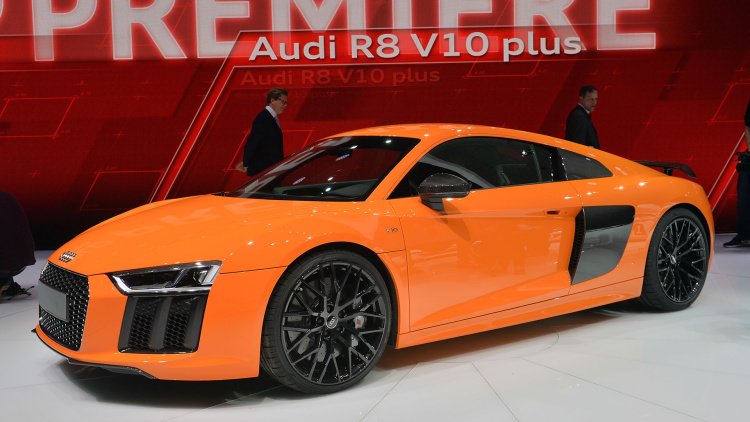2016 Audi R8 Looks Like a Promising Second Chapter

But where the original R8 was something of an analog supercar, boasting a naturally aspirated V8 and a delightful gated shifter, this new model is something much different.
Gone is the popular, high-revving 4.2-liter V8 and the snickety-snack transmission, although the 5.2-liter V10 that joined the original R8 later in its life remains. In base form, it turns out 540 horsepower in the second-gen R8, while the V10 Plus model can be had with an impressive 610 ponies. That's good for a sprint to 100 of just 3.5 seconds and a top speed of 323 km/h in the former and 3.2 seconds and 330 km/h in the latter. A seven-speed dual-clutch transmission is the sole gearbox, sending power to a revised Quattro all-wheel-drive system that's capable of shunting 100 percent of the engine's torque to the rear axle.
Meanwhile, Audi has managed to shave 441 pounds by using a new Audi space frame, with more aluminum and carbon fiber than before. Weighing in at just 3,205 pounds, the R8 is slightly lighter than the new, V8-powered Ferrari 488 GTB, although it's not quite as light as its cousin, the 3,135-lb Lamborghini Huracán.
And of course, we can't forget to mention the R8's new look. It's very clearly an evolution of the first-gen's handsome styling. A strong grille and canted headlights, inspired by the TT and the concepts that came before it, highlight the front end, while Audi has opted to bisect the last-gen car's side blades with a body-color section of sheet metal. In back, slim taillights, exhausts that have been integrated into the rear bumper and a central diffuser are the main styling features. Opt for the V10 Plus, and you'll get a sizable rear wing, for added downforce.







